A common adage is that if you train as you will fight, you will fight as you have trained. For many people (including police officers, particularly in smaller jurisdictions), training is largely limited to the traditional square range where you stand at a line, point a gun at a static target and pull the trigger. While this sort of training is better than nothing, the problem is that if you find yourself in a real life and death situation, your body will experience a massive adrenaline dump, your fine motor skills will go out the window and much of what you’ve learned will be forgotten in the heat of the moment. Square range training is fine for competition and weapon familiarization, but if your aim is to train for a real life encounter with an armed attacker, square range training has serious limitations . . .
The next step up on the training continuum is the “tactical” style of training. The tactical model tends to be more dynamic – sometimes you’re moving then shooting, other times shooting while moving. Movement can be forward, backward, or side to side. International Defensive Pistol Association (IDPA) and International Practical Shooting Confederation (IPSC) competitions are designed to test one’s skills in this sort of dynamic environment.
Unfortunately, tactical training, while more realistic, is also somewhat more dangerous than simply standing on a line and shooting down range. That means it requires a different range setup than square range training does. Movement in particular can be a challenge. When moving side to side, you need to ensure you don’t accidentally bump into a fellow shooter (who also happens to be holding a loaded weapon). When moving forward and back, it’s critical to make sure you don’t find yourself too far forward of or behind another shooter as that’s how deadly accidents can happen.
A half step up from tactical-style training is to add stress to the equation. Short of having someone randomly pop up from behind a berm and squeeze off a couple of shots in your direction, the best way to simulate stress is to do some cardio work. One of the drills the military uses is to start several hundred yards back from the target, drop to the ground and put rounds down range. Shooters then jump up, run 100 yards or so to the next firing line and shoot another string. Then another 100 yard sprint and more rounds fired. In some cases, the soldiers then reverse course, running back to their starting point, dropping and firing again rounds at 100 yard intervals.
The beauty of this approach is that by the time you complete the course of fire, you’re likely breathing pretty heavily, your heart’s pumping and you’ve done a decent job of simulating how your body is going to operate under stress. You obviously don’t have to go to these lengths to simulate stress and until you have a lot of practice handling your gun, it may not be a great idea to start sprinting back and forth with a loaded weapon. Again, that’s how accidents happen. There is, of course, nothing stopping you from putting your pistol or rifle down, doing a quick sprint behind the shooting position, some pushups, jumping jacks or your favorite cardio routine, then picking up your gun and sending some lead downrange.
All this is good, but it still lacks one critical element — fear. Stress brought on by exercise or having a drill sergeant chew your ass is great as far as it goes, but until you have someone really shooting back at you, you’re never going to know what it feels like to be in a gunfight. Sure, you could go for a midnight stroll on the south side of Chicago or spend your summer vacation near a Forward Operating Base in Afghanistan. Both of those experiences would likely give you a good idea as to what it’s like to be under fire and afraid for your life. The problem of course is that you don’t get to make a mistake. Well, you’ll get to make one mistake, but chances are one is all you’ll get. Since few people are born ninjas, the ideal scenario is shooting training where a mistake doesn’t get you or someone else dead.
Force-on-force as a concept is not new. Police and military agencies have used paintball for years to simulate combat situations. The problem with paintball is that it lacked realism. After all, at the end of the day, paintball is a game that required paintball guns and equipment that doesn’t feel much like combat or duty gear. Sure, you could simulate a shoot-out, but you’d have a much harder time if the simulation required a police officer to dynamically encounter a situation that might require him or her to draw a weapon from a duty holster.
On the military side of the house, the malfunctions presented by paintball systems are nothing like the problems soldiers would encounter in the real world with real weapons. Paintball guns jam in ways that would never happen with an M4 and the troops would develop clearance skills that would be of no value when they had to do it for real.
Airsoft is another alternative. A number of companies make highly realistic pistols and rifles, many of which are under license agreements from the makers of the real guns, so the weapons look and feel like the real thing right up to the point of actually firing. Better gas and electrically operated guns even simulate things such as reciprocating slides and bolts so some malf drills are similar. The better Airsoft guns mirror the weight, size, ammo capacity, and manual of arms of the real things.
The only problem is that it’s sometimes difficult to determine if you’ve actually shot someone. Some of the more “competitive” folks might deny being hit and even honest folks in the heat of battle may simply not know a hit has been scored (particularly if they’re wearing several layers of clothing and tactical equipment).
The ideal solution for force-on-force training would borrow elements from both the worlds of paintball (marking if/where a person was hit) and Airsoft (realistic weapons). Ideally, if there were a way to convert actual duty weapons to fire some sort of paintball style marking round, we’d have our ultimate training scenario. Fortunately, due to the efforts of several companies, we now do.
In the late 1980’s SNC Technologies Inc. developed what would become the first non-lethal training system that used real weapons. SNC was a subsidiary of SNC-Lavalin at the time, a Canadian engineering and construction company. They supplied ammunition and related products to military and police customers around the world. In talking with and observing their customer base, they recognized that police and military units needed a more realistic training program than what was then available. So they set to work on what would become the Simunitions FX line of non-lethal training ammunition.
SNC Technologies was later acquired by General Dynamics Ordinance and Tactical Systems. The word Simunitions is obviously a combination of ‘simulated ammunition’ and is also a registered trademark of General Dynamics. For simplicity’s sake, when I use the term, Simunitions, I’m referring specifically to General Dynamic’s product line. When I mean to refer more generically to a marking cartridge system, I will use the term marking cartridges.
The Simunitions round is currently offered in three calibers; .38 Special, 9mm, and 5.56mm. All three calibers employ a small wax “bullet” that’s filled with a colored, water soluble marking compound. At the other end of the round is a shortened brass case containing a primer (either standard or the newer no-lead “Toxfree” variety) and in the case of the 9mm and 5.56mm rounds, a small (less than one grain) amount of powder. The primer is what provides the real force needed to launch the marking projectile at the target. The powder makes a semi-automatic weapon cycle its action and load the next round. Since the .38 Special is a revolver cartridge, there’s no need to cycle it, so .38 Special Simunition cartridges have no powder – only a primer.
In order to make a weapon cycle properly with such a small amount of powder, SNC Technologies developed a plastic sabot with a forcing cone design that channels almost all of the powder’s force into the cycling action. The plus side is that very little powder is needed. The downside is that spent Simunitions cases still have the plastic sabot embedded in them which makes range cleanup more of a hassle as the plastic sabot prevents simply processing them like normal brass casings. If the standard primer version is used, the result is hazardous waste that must be disposed of separately. This, by the way is one weakness that the competition have eliminated with their force-on-force offerings, but more about that in a bit.
The big win for Simunitions was the ability for soldiers and police to train with actual duty weapons. The Simunitions technology enables the marking rounds to duplicate the full functionality of the gun, so everything that can go wrong with a gun firing duty ammo can go wrong with a gun firing Simunitions rounds. Operators finally had a near perfect solution. There was however, still the nagging safety concern. Had operators simply been allowed to load their regular guns with Simunitions ammo, sooner or later a mix-up would have occurred and live ammo would have been accidentally loaded into a gun, used for a Simunitions training program, and someone would have left training with more holes than they had at the start.
To prevent this, SNC Technologies took several approaches to develop reversible firearm conversions that, when in place, would preclude the chances of discharging live ammunition. The semi-automatic pistol has the most invasive conversion method. Depending on the model of the pistol, the user either changes out the entire slide or replaces the barrel. The barrel of a “9mm” Simunitions gun is actually 7.62mm. This means that with the Simunitions barrel in place, a gun cannot chamber a real 9mm (or any larger caliber) round. For those, who like me, may be thinking, “What about the Russian 7.62 x 25mm round?” let me assure you that it doesn’t chamber either – it’s too long.
Aside from the pistol conversion kits, some manufacturers offer special versions of their guns for use with Force on Force marking rounds. Glock for example has their G17-T. This is for all intents and purposes a G17 but it cannot be modified to fire live ammo (the slide dimensions are slightly different from a regular G17 slide).
SNC Technologies took two different approaches to the AR-15 conversion. Earlier versions of the technology simply replaces the user’s standard upper receiver with a Simunitions branded upper receiver that would fire the 9mm Simunitions cartridge. While this worked, it was a fairly expensive option and it simply did not feel like a real 5.56 gun. While the 9mm uppers are still sold, most users simply purchase a special Simunitions bolt carrier group that replaces the one in their weapon. This modified bolt will not fire a live round and a regular bolt will not fire a 5.56 Simunitions round. The Simunitions bolt is painted bright blue so the operator and safety officers have a visual cue to which bolt carrier group is installed.
The .38 Special conversion proved to be the simplest of all. Every package of Simunitions .38 Special Ammo includes two sets of safety rings (one for .38 and one for .357) that are inserted into the chambers on the cylinder. The Simunitions .38 Special round is slightly shorter than a standard round and thus will still chamber in a pistol with rings in the chamber. A standard round will not. The rings can be easily removed from the cylinder at any time to return the weapon to lethal status.
These three platforms have formed the basis for many different weapons conversions. Kits are available to convert such things as the M249 machine gun, H&K MP5, a number of different carbines and rifles from many manufacturers (Steyr, H&K, FNH), shotguns, and pistols. For super-realistic training, General Dynamics even sells a modified AK-47 in both semi and full auto flavors that has been modified to fire the 5.56 Simunitions round.
While this all sounds perfect, it is not without its problems. As noted, GD/SNC Technologies was one of the very early developers of this training system. Unfortunately, the technology has not changed all that much from what was developed almost three decades ago. Simunitions now has competition from new players who are bringing more advanced designs to market.
ATK, a company like General Dynamics with fingers in aerospace, defense, and loads of other fun stuff have created their Force on Force line. What’s nice about Force on Force is that the ammo is compatible with guns that use the Simunitions Conversion kit. This means that a facility that initially purchased Simunitions converted guns can easily switch to the Force on Force system by changing ammo.
The Force on Force marking cartridge employs a dual primer system. One primer propels the projectile out of the gun while the second provides the force necessary to cycle the action and load a new round. Since it does not require the plastic sabot of the Simunitions cartridge, the spent aluminum cases can simply be swept up and disposed of either in the trash or with other aluminum products. The primers are all lead free, so there are no lead hazards when using it. ATK also claims a longer shelf life than GD does. While the Simunitions line specifies a 5 year shelf life, ATK’s line advertises a minimum of five years.
A third alternative is Ultimate Training Munitions (UTM), a company that was founded in 2000 expressly to create products for close quarters combat training. Besides its line of Man Marking Rounds (MMR), UTM also offers a range of lethal ammunition that has been modified to limit the distance the rounds will travel. This enables police and military units to train in complexes with much smaller surface danger zones. In addition to the standard 9mm and 5.56 mm rounds, UTM also offers MMR cartridges in 5.7mm.
Like SNC, UTM has a complete line of weapons conversion kits that fit its ammo. The UTM conversion kits and ammo are not compatible with the Simunitions or Force on Force systems, so once you make the equipment investment, you are probably locked in. As with the Force on Force system, UTM rounds use a dual lead-free primer system as opposed to the sabot and powder approach of Simunitions so they run cleaner and are more reliable. The big advantage of the UTM system over the Force on Force line seems to be accuracy. UTM’s specifications for accuracy are better than both the Force on Force and Simunitions systems.
It’s a good thing that customers have options beyond General Dynamics for Force on Force training. The Simunitions brand cartridges have a number of problems inherent to their design – some well-known, some not so much.
Reliability: The biggest issue that I have seen involves reliability. The wax marking cartridge that is used in the Simunitions ammo is known for its fragility. It has a nasty tendency to self-destruct while still in the barrel, which renders the sim gun useless until it can be cleaned. This sort of malfunction is not one a soldier would likely see in the real world. It is very rare for a real bullet to get stuck in the chamber if one is using decent ammo. With Simunitions ammo, this is not such a rare occurrence. I know of a couple of schools that have transitioned away from the Simunitions line of products to one of the competitors for just this reason. The other issue that I have personally experienced with Glock magazines is that it if you load more than a few rounds into it, sooner or later, the pressure will cause the Simunitions “bullet” to separate from the rest of the round which will result in the same jammed gun problem. Both the Force on Force and MMR systems have a better reputation for reliability.
Accuracy: The Simunitions ammo is rated as “tactically accurate” out to 25 feet for the 9mm/.38 cartridges and out to 100 feet for the 5.56 cartridge. The question though is what they consider to be tactically accurate. Speer’s Force on Force ammo promises 4” groups out to 25 feet with its 9mm ammo and 3” groups out to 75 feet with its 5.56 ammo. UTM steps up even higher with promises of 2” groups out to 30 feet with its 9mm rounds and 3” groups out to 96 feet.
Toxicity: Lead contamination is becoming more of a recognized problem. The U.S. Military has started to mandate lead free training rounds and more and more private ranges are switching over to clean ammo. One example is the Sig Sauer Academy in Epping, NH which only permits frangible, lead free rounds in its indoor shooting range. Both Speer and UTM’s offering are 100% lead free. Simunitions does offer both standard and lead free options, but you need to make the extra effort to ensure you are getting the “toxfree” version of the primer if that is what you want.
Powder Fouling: Both Speer and UTM make use of dual primer systems as opposed to the Simunitions primer plus powder method. This reduces barrel fouling and extends cleaning times out.
In the end though, you will likely be using whatever the training facility has on hand. If you are involved in the setup or specification of a new facility, it may make sense to investigate some of the newer players. Of the issues noted above, the reliability one is the most serious and bears consideration.
In Part Two of the Article, we’ll cover Force on Force Scenarios and Training.

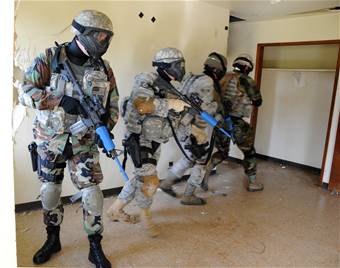
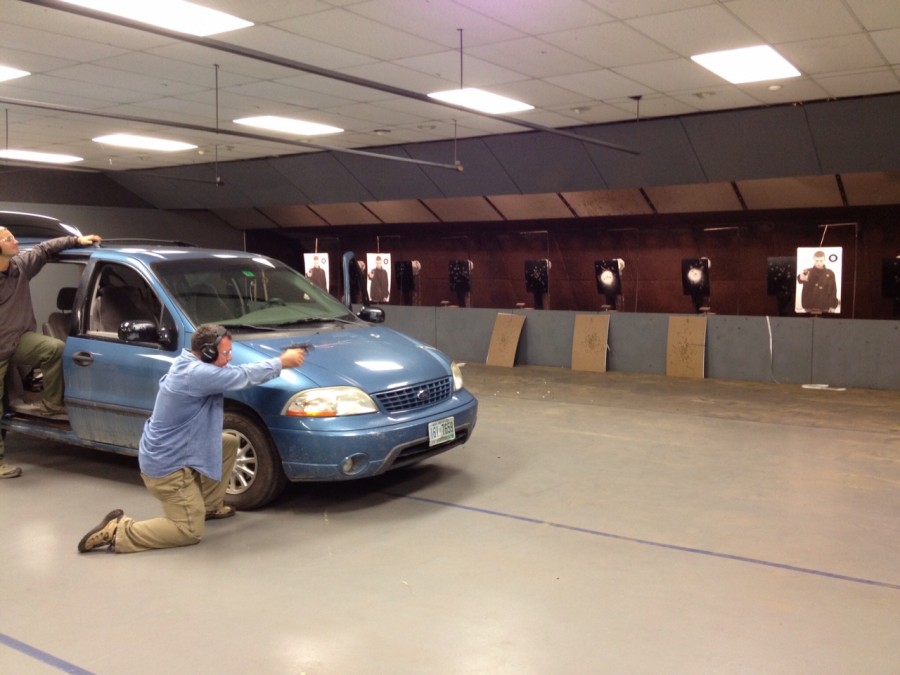

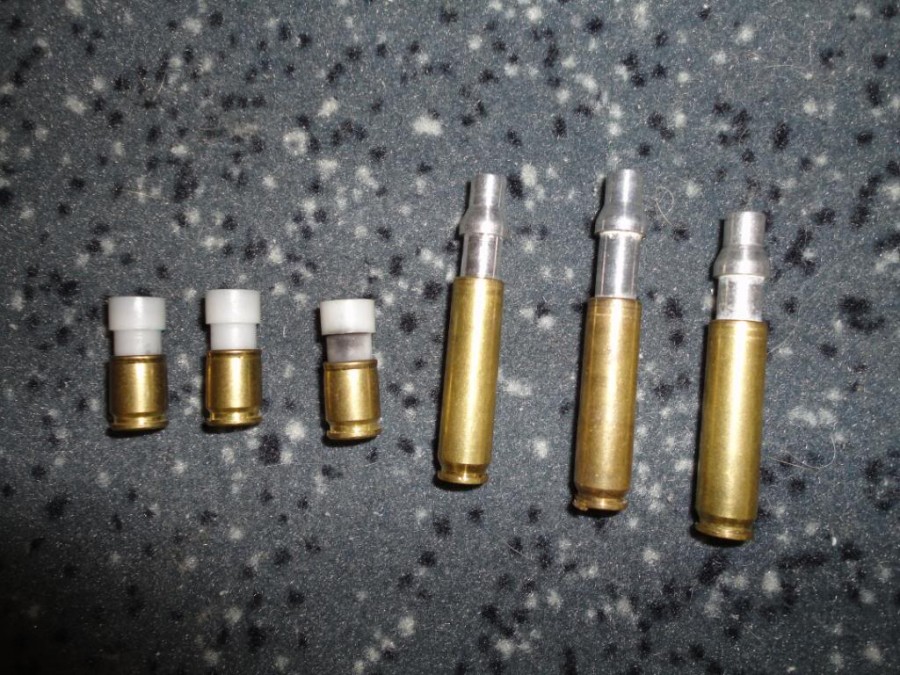

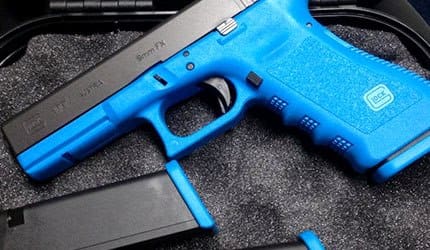
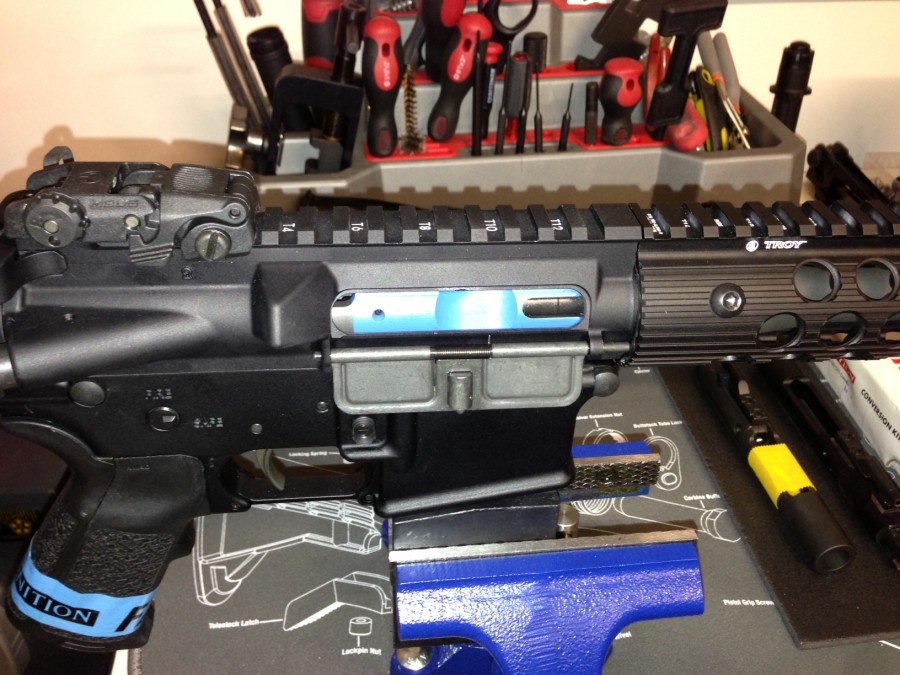




Cops as soldiers. Whee. How’s about we send all these wannabe soljers to some war zone to get their bellies shot through, AND HIRE SOME DECENT COPS?
Really stupid remark, Burke.
10-4
Wow, hate the Police that much? Are you a member of ANTIFA? Black Lives and ONLY Black lives Matter? Maybe you suffer from LWGS and you feel the need to attack the police?
Why don’t you contact a large metropolitan Police Force that trains with the FORCE ON FORCE approach with simulations?
There was a Black anti-Police civil rights leader who took the police up on an opportunity for a civilian to play cop in a real world training scenarios. The outcome might surprise you. He left saying he has a new respect for the Police and how they must make split second decisions on shooting or not shooting. They don’t get second chances.
The biggest problem Police face today are the people who feel they have a right to challenge the Police in the streets. That when given a lawful command (like get out of the road and onto the sidewalk) people need to comply. People receiving a ticket need to fight the ticket in court. Police are the authority. If you have a complaint, file it at your local DAs office.
I’m not sure what the speed of the 9mm Sim FX round is, but it hits about 2-3 low for me at 25-30 yards. That means my first round hit my “bad guy” in the crotch at that distance instead of center mass. Oops. The rest hit the upper thigh and knees.
Groin protection is a good idea.
For those that can’t afford simunition training on a regular basis, you can always go the cheaper paintball route with a paintball pistol:
http://www.rap4.com/store/paintball/p/003301/p99-internal-air
You can also buy a holster and just go to a paintball field to train which I imagine is much cheaper than taking dedicated simunition courses at a specialized range.
Granted, the paintball idea is more for follow-up training and for those people that are refining skills. I’m sure the simunition training is invaluable and something everyone that owns or carries a firearm for self-defense should look into.
The only bad habit that creates is that you are not using the EXACT weapon you own and will be using. It can cause poor muscle memory or reload techniques. That is why so many Sim/force on force rounds include models for most weapons.
Just my two cents worth…
I have not had much luck with paintball “pistols”.
they jam often and are just plain messy.
hey Burke cops are soldiers, soldiers against crime. What were you thinking or were you?
—
Contact info for ATK or UTM?
They’re hyperlinked in the main story.
Looks like a really fun way to play paintball, to bad civilians can’t buy this stuff.
Can’t technically buy it, but there are getting to be lots of places where non LEO/MIL folks can train with it for not a huge amount of money. More on this in the forthcoming Part 2
Very interesting read Jim. Thanks for the info.
When you shoot this simunition stuff does it have the same sound levels as normal gunfire? The benefits of this sort of training are actually very interesting.. I hadn’t really thought about going all “commando” but this actually looks like.. a lot of fun 😉
http://simunition.com/en/range_program/united_states/Florida
What a sells pitch, a few years old, but in the end besides the recoil and loud bang is it not also just a paintball game?
A usefull tool for sure but one thing not mentioned is the cost per the marking rounds $$$$ compared to other and/or reusable alternatives. I’m curious what amount of time you spend converting your weapon back and forth?
While most of your statement about the paintball training tools above might have been true a few years ago, the advancements made since then, in the realism, look, weight, with the latest being mag fed with true round capacity. They might just surprise you, you’d be hard pressed to tell the difference from a few feet away.
The advancements are not only the delivery system but in the wide range of ammo types that makes this type of tool comparable in accuracy and range, Not only useful in training but on the job, even self defense when you consider the less lethal applications.
What do you recommend?
I have tried Tiberius, RAT, and Tippman.
For an AR-15 you just swap out the BCG, which takes less than a minute. Doesn’t look like any of the conversions require anything more than basic field stripping of any weapon.
All good points but Airsoft is oh so much cheaper.
Simple solution to the hits problem: Mandate everyone in your group wears thin clothing, or at least short sleeves. If some “competitive” guy isn’t calling his hits, you just lay into him so it’s…obvious that he’s been hit.
Also not mentioned is that the protective gear used for simunitions is bulkier than paintball and airsoft. When I trained with sim rounds I found it nearly impossible to get an accurate sight picture using the space-suit-bulky helmet I was forced to wear. In airsoft simple shooting glasses are sufficient protection…although after being shot in the lip/ear a dozen times I usually wear a full goggles/facemask.
*Not Trolling, seriously want to hear opinions*
Where do you guys come up with this stress reaction stuff? As far as I understand stress reactions do in fact have a physiological impact on your body, but having a stress reaction in the first place is an entirely mental proposition.
Stress is stress as far as I can tell, my reaction to being assaulted was no different from my reaction to being hit by another vehicle, losing a handhold while free climbing or hydro-planing on a wet day.
I just don’t understand how training is going to change someone’s psychology, you’re either the type of person who keeps calm or the type who doesn’t, performance in practice or familiarity or whatever doesn’t keep pro-athletes from dropping the ball so why would it work for you?
I’ve used UTM rounds in USAF training. They were very reliable until about the 10th day. I’m not sure what the round count was but I could only get the M4 to fire by switching from safe to fire every couple of rounds. A good cleaning cleared the problem right up. They were effective (and lots of fun) for QCB training.
Comments are closed.